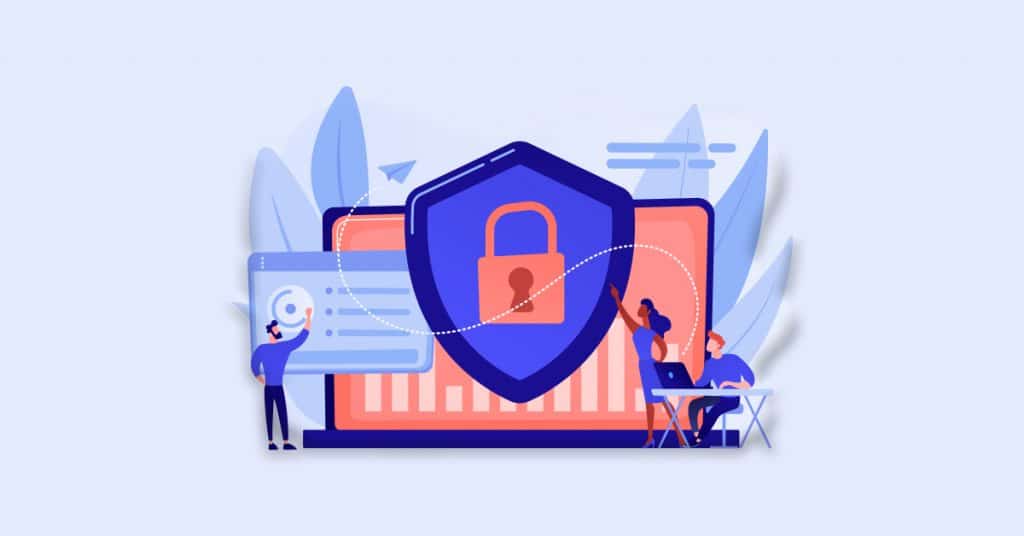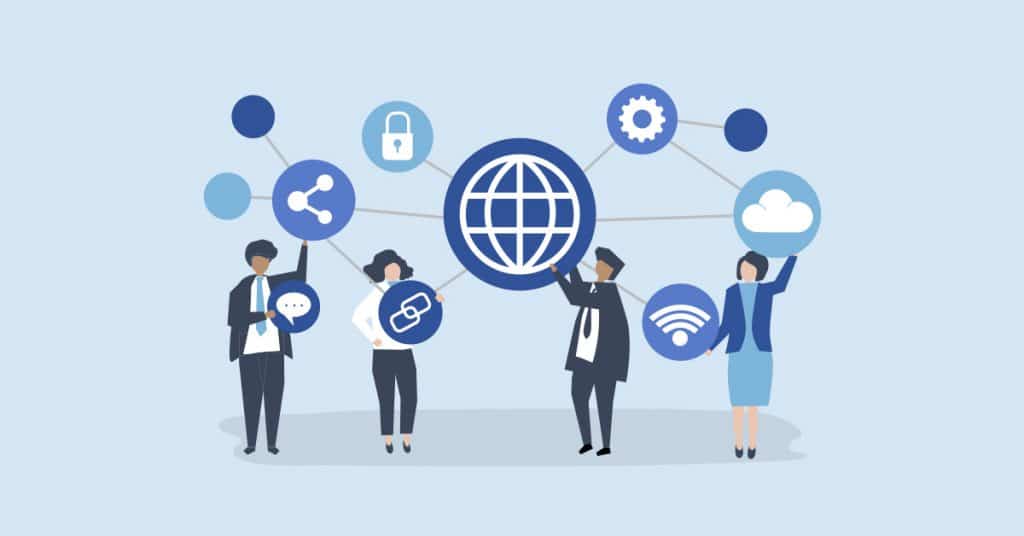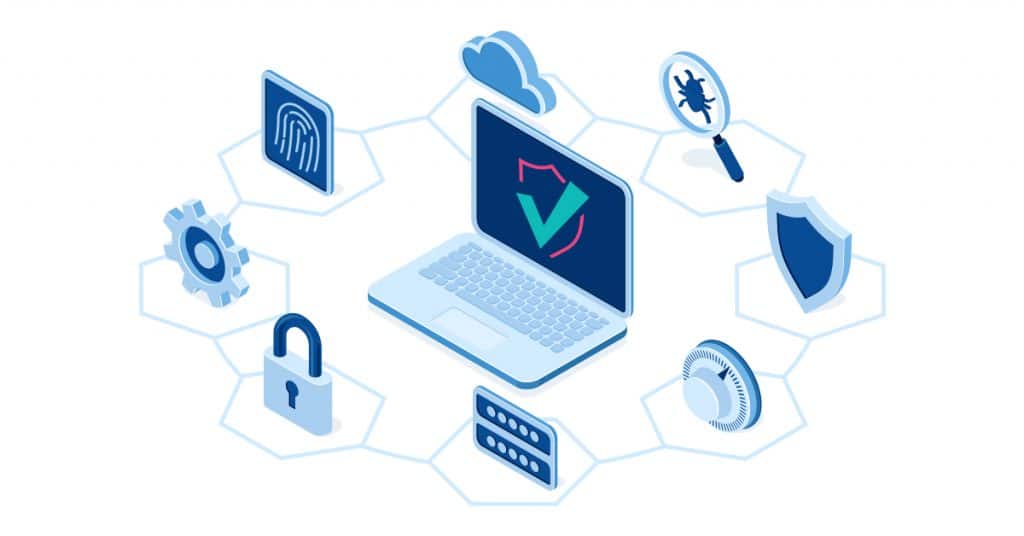The most squeezing data innovation security issue confronting Data and IT Services isn’t PC programmers. Most of the safety breaks come from an organization’s workers. That’s because, in the last six years, computer programmers have come to be especially creative in ways to evade security measures: Many set up elaborate routines that cause even locked-down operating systems to run. Others are constantly adding functions that require an administrator password to access them. By moving this chore from the operating system and its administrators to workers, programmers “put the burden on the workers themselves,” explains Stu Essner, director of Credant’s Center for Cybersecurity, “and that means a lot of frustration and errors in security.”

1. Keep a Strong Password Policy
A basic secret word isn’t in every case enough to keep individuals out of your PCs and your online records. Numerous individuals take the path of least resistance, utilizing things they can undoubtedly recollect as their passwords. They use relatives, pets, dates, and sports groups as their secret phrases. You can’t fault them, however. It’s difficult to recall every one of the passwords for every one of the records you need today. In any case, you need to ensure this doesn’t occur. A decent secret key arrangement will need at any rate eight characters, one lower case letter, one capitalized letter, and one extraordinary character. You can likewise utilize short, arbitrary expressions that aren’t normal in regular daily existence. For online records, you can likewise utilize secret key supervisors like LastPass and Bitwarden to create and store every one of your passwords. This way you don’t have to recall them all.
2. Encrypt Any Backup Data

A decent reinforcement plan is fundamental for any business services. We have more alternatives accessible today that can help. Regardless of whether you are doing cloud reinforcements, actual reinforcements, or both, ensure you scramble your information. Many cloud administrations offer this capacity, so it is just a matter of finding the help that will give this to you. Numerous actual reinforcement programming will likewise offer encryption. In the event that you have one that doesn’t, there are numerous projects accessible that will scramble your information before it goes into a reinforcement. You can decide on encryption on the reinforcement customer side. In this alternative, you encode information on the reinforcement customer, and send the scrambled information on the organization and afterward to the reinforcement gadget. On the off chance that you can’t manage the cost of host preparing cycles for the encryption of reinforcement information, you can pick the reinforcement worker to scramble information. After this, send encoded information to the reinforcement gadget.
3. Conduct All Work on Secure Networks

Organization security comprises the strategies, cycles and practices embraced to forestall, distinguish and screen unapproved access, abuse, adjustment, or forswearing of a PC organization and organization available resources. Network security includes the approval of admittance to information in an organization, which is constrained by the organization head. Clients pick or are appointed an ID and secret key or other confirming data that permits them admittance to data and projects inside their position. Organization security covers an assortment of PC organizations, both public and private, that are utilized in ordinary positions: going through exchanges and interchanges among organizations, government offices, and people. Organizations can be private, for example, inside an organization, and others that may be available to the community.
Organization security is associated with associations, ventures, and different sorts of foundations. It does as its title clarifies: it gets the organization, just as securing and administering tasks being finished. The most widely recognized and basic method of ensuring an organization’s assets is by doling out an extraordinary name and a related secret word. A mobile workforce is becoming more popular every year. You need to take action to make sure your employees keep your business data out of insecure environments. You can handle this when you are in the workplace, and representatives have their gadgets associated with your organization’s Wi-Fi. In any case, when they are out in the wild, you lose a ton of control. Your IT experts can execute an organization VPN for your group to interface with when they lead business away from the workplace. A VPN keeps your organization information secure from the issues of unstable public Wi-Fi.
4. Make Employee Training Programs
All the security on the planet doesn’t make any difference if your representatives don’t as expected use it. Workers are quite possibly the most widely recognized reason for organization security penetration. To limit the human issue, make programs that will show your staff the things they ought to and shouldn’t do. You ought to teach them about phishing endeavors, malware downloads, obscure USB drives, and all the other things that an aggressor can use to bargain your association.
5. Steps to conduct employee training program
1. Evaluate preparing needs:
The initial phase in building up a preparation program is to recognize and survey needs. Representative preparing needs may as of now be set up in the association’s essential, HR, or individual improvement plans. In case you’re fabricating the preparation program without any preparation (without foreordained destinations), you’ll need to evaluate which zones to zero in on.
2. Set hierarchical preparing goals:
The preparation needs appraisals (authoritative, task, and individual) will distinguish any holes in your present preparing activities and worker ranges of abilities. These holes ought to be investigated, focused on, and transformed into the association’s preparation destinations. A definitive objective is to overcome any issues among current and wanted execution through the improvement of a preparation program. At the representative level, the preparation should coordinate with the territories of progress, which can be exhaustively distinguished through 360 criticism and assessments.
3. Make preparing activity plan:
The subsequent stage is to make an extensive activity plan that incorporates learning hypotheses, instructional plan, substance, materials, and other preparing components. Assets and preparing conveyance strategies ought to likewise be itemized. While building up the program, the degree of preparation and members’ learning styles need to likewise be thought of. Numerous organizations pilot their drives and accumulate input to make changes a long time prior to dispatching the program expansively.
4. Carry out preparing activities:
The execution stage is the place where the preparation program springs up. Associations need to choose whether preparing will be conveyed in-house or remotely organized. Program execution ought to think about representative commitment and learning KPI objectives, just as altogether arranging the planning of preparing exercises and any connected assets (offices, hardware, make survey measure and so on) The preparation program is then authoritatively dispatched, advance, and directed. During preparation, member progress ought to be checked to guarantee that the program is compelling.
5. Assess and change preparation:
As referenced in the last fragment, the preparation program ought to be constantly observed. Eventually, the whole program ought to be assessed to decide whether it was fruitful and met preparing destinations. Criticism ought to be gotten from all partners to decide program and educator viability, in addition to information or expertise securing. Examining this input close by a worker execution audit will permit the association to recognize any shortcomings in the program. Now, the preparation program or activity plan can be changed if goals or assumptions are not being met. Limit Your Guest Wi-Fi.
6. Structure a Response Plan

Indeed, even the most very much planned security plan can have a security opening. It very well may be an imperfection with a plan or an imprudent representative. It can happen to anybody, and you need a game plan for when it does. Set aside the effort to anticipate all the potential assault vectors for your business and plan a game plan to execute if the most noticeably terrible occurs. The speedier you are to react to danger the more you can limit the harm done to your business.
7. Protect Your Company Network With Firewalls

A firewall is a network security device that monitors inbound and outbound traffic to your business network. Firewalls can be hardware (a physical device such as the monitor you’re reading this on) or software (a program on your computer such as Microsoft Office). Firewalls provide a vital layer of protection to help keep your business secure, but shouldn’t be considered absolute security—firewalls are just one component of cyber security. If you are unsure of which types of firewall are best for your organization, consult an IT professional for guidance
8. Regularly Update Company Devices
Regularly updating your operating systems and antivirus software can help eliminate unnecessary vulnerabilities to your business. Every computer in your workplace runs an operating system—such as the popular Microsoft Windows system for PCs—requiring maintenance in order to stay up-to-date with the latest security updates. One way to make sure system updates are a regular occurrence is to set up company-wide notifications using email, internal messaging systems, and calendar reminders for employees to prevent them from hitting “dismiss” on system update notifications. Don’t hesitate to lean on your management team to encourage good habits with employees and keep these updates top-of-mind, too.
9. Establish An Incident Response Team
Just like an emergency response team for environmental and medical emergencies, your organization should have an incident response team in place to address cyber incident response. Your response team information should be accessible “in case of emergency”—including the names, phone numbers, and after-hours contact information of key incident response stakeholders such as the business owner, relevant IT professionals, finance team leadership, and any other figures critical to your business operations.
10. Perform Annual Cyber Security Assessments

Simply because cyber security control exists does not always mean that it is effective. Performing an annual cyber security assessment will assist your organization in identifying vulnerabilities and establishing an action plan to eliminate them. For example, firewall controls won’t protect you from cyber threats if it isn’t configured properly. Ensure that you are performing in-depth assessments on your controls and don’t hesitate to ask for assistance from cyber security professionals if you need it.
11. Establish Better Cyber Security Controls
Today’s internet landscape makes it essential that you do everything you can to increase the security of your valuable data and IT services systems. Data breaches from cyberattacks are on the rise, so businesses need to stay vigilant in their cyber security efforts. A complete cyber security approach consists of multi-layer controls to ensure complete protection and defense against harmful cyber threats. When you make Nerds On Site your cyber security partner, you are enlisting the expertise of our entire team of cyber security experts with over 100 years of combined experience.

Ways to establish better cyber security control
– Create a Dedicated Insider Threat Role
An insider threat program is considered a core part of a modern cybersecurity strategy. Having employees who have access to data is risky since they can leak information or damage equipment. Creating an insider threat program is essential for companies that have sensitive data, and could have their reputations ruined due to exposure via an insider attack. It does come with a cost and can be considered a low priority task, businesses should not delay, and instead, gain the support of top management to develop policy across all departments.
– Secure Remotely Working and Travelling Employees
Many corporate employees have the dangerous habit of accessing corporate networks through unsecured public Wi-Fi networks while traveling on work trips. Sacrificing security for convenience is unacceptable in the corporate world, and employees should be aware of the huge risks they are taking. Training and education on the precautions one can take to avoid risks are essential. Options, such as using VPNs while surfing the web when traveling, installing anti-malware programs, will tighten the security gaps in your workforce outside the office.
12. Use multi factor authentication for critical data.
Multifactor authentication is an inexorably mainstream security measure. Basically, multifaceted confirmation consolidates “something you know” with “something you have.” For instance, you may enter your secret word and afterward get a one-time code shipped off your telephone as an optional wellbeing measure. On the off chance that you have a profoundly classified data set, setting up multifaceted confirmation goes far to secure it. It’s a generally effortless strategy to carry out and improve your security from probably the most widely recognized assaults. “At the point when PC clients and organizations ask me for a solitary advance they could take to significantly improve their security it’s not difficult to reply: empower multifaceted confirmation,
13. Gather and offer just what you need.
A basic method to diminish the danger of information breaks is to be cautious about what you gather in any case. Whenever the situation allows, do whatever it takes not to assemble or store private customer subtleties that you don’t totally require. Information breaks can target data that isn’t fundamentally critical to a business, and that absence of significance is frequently why the information wasn’t gotten. By restricting the data you gather, you’ll likewise restrict the client’s openness in case of penetration. Illuminating your clients about how you gather and ensure their information is a decent method to construct trust as well. You may additionally need to restrict the data that your workers approach. Numerous organizations just give representatives the data they need to tackle their work. This causes them to represent a danger either inadvertently or perniciously.
14. Know about phishing tricks.

Network safety specialists will reveal to you that teaching yourself and workers ought to be the main concern since introducing a firewall or utilizing hostile to infection programming can’t ensure against specific strategies. Take phishing, for instance, which is a famous cybercrime because of its simple execution and adequacy. Programmers don’t have to uncover weaknesses or get around firewalls. All things considered, they simply need to send messages bedeviling individuals to download records or snap-on specific connections. Regardless of whether through mass messaged obscene subject messages, or focused on messages bearing disturbing subjects and mimicking known senders, hoodlums realize how to provoke human interest to boost individuals to open a file. That’s the reason mindfulness is so significant. The more you and your representatives are aware of the most widely recognized kinds of digital wrongdoing, the better shielded you will be from programmers. “Everything necessary is one naïve representative and they’re all set.”
15. Run tests for weaknesses.
Another approach to be proactive about potential security dangers is to run normal weakness tests. These outputs are intended to caution organizations about shortcomings that could be abused by programmers. Weakness examinations are particularly critical at whatever point you roll out huge improvements to your inward frameworks. Those weaknesses could incorporate obscure gadgets associated with your organization, web setup blunders, and missing updates to your product. Setting aside the effort to test these frameworks before they go live could forestall exorbitant issues later on. Following the means above will unquestionably go far to upgrading the security of your organization’s information. Be that as it may, there could be no silver projectile for diminishing security chances.
16. EVALUATE BYOD POLICIES
BYOD stands for “bring your own device” and refers to any occasion where an employee might bring their personal smartphone, laptop, tablet, or other devices to work for professional use. It’s important for businesses to outline when and what type of use the company permits because it’s common for people to use their own devices for work. Establishing a strong BYOD policy will prevent potential issues and streamline the use of individual devices.

- Outline appropriate uses
Specify when and how employees can use their devices. List which programs they can use to access and work on company documents. Detail any programs or uses that are not permitted in the office.
- Detail acceptable devices
State which devices are permitted for BYOD use. Perhaps you will allow personal smartphone use but require employees to work on company computers. You could also give the option of using their own device but provide company-owned technology if they prefer it. Outline which operating systems and device models are compatible with the programs and apps that you require employees to work with.
- Set up a cybersecurity program
Host training sessions that explain how employees need to manage security on their personal devices. Detail what security programs and measures are in place to protect company data. Make sure employee data is protected as well. Only use apps that will not access or save employees’ personal data.
- Discuss cybersecurity insurance with your provider
Your insurance provider may require documentation regarding your BYOD policy. This should specify how company data is protected and your plan for recovering company information from a personal device should the individual leave the company
17. IMPOSE EMAIL RESTRICTIONS

Email is a common entry point for Cybersecurity Hijacking, cybercriminals, and malware. Tricking employees with phishing scams and malicious links within email messages is common. Use message encryption, spam filters, and antivirus software to prevent threats from reaching their intended targets. An identity monitoring tool is a type of email security solution that can also be extremely useful to businesses. Identity monitoring solutions can help prevent account takeover, reduce response time with early warnings, notify you of exposed credentials, and monitor multiple domains. For instance, Solar Winds Identity Monitor is an easy-to-use, comprehensive, and scalable email security service designed to keep your corporate credentials safe and notify you when they are leaked.
18. EXPECT A CRISIS
Unfortunately, experiencing a security threat is a matter of “when” not “if.” Responding to a crisis is easier when a system-wide response plan is already in place. Using this small business cybersecurity plan template will ensure you are ready to handle any emergency.
19. Protect against data loss.
Regularly scheduled “fire drills” to restore information from the backup. They are a necessity, not a frill. If you currently have no drill system, or it has gotten rusty, it’s only fair to notify everyone involved that “no-excuse” exercises are on the way. It sounds easy, but it can be a tall order because a lot can go wrong along the chain of events needed to perform a complete backup and restore. a data protection solution. This type of device can protect your business from data loss if your network’s security is breached
Ways to Protect against data loss
- Address data security
Mobile devices are powerful business tools but they can leave your data vulnerable. Ensure your devices can be wiped if they are lost with a remote device management system and use hardware or mobile device systems that encrypt data.
- Trust the experts
Information is too significant to ever be left alone. In the event that you do lose it, don’t attempt to recuperate it by utilizing any sort of analytic apparatus. You would prefer not to make further harm by attempting to fix the circumstance all alone. All things considered, work with a confided in reinforcement and information recuperation master to guarantee your information is protected.
Most organizations don’t plan to lose information however that doesn’t mean they are resistant. Nobody needs a fiasco except for you actually ought to be readied. Recollect that the best protection is a decent offense. In the event that you keep the information a high need consistently, you will be secured on account of any information misfortune.
Conclusion
Following the means above will unquestionably go far to upgrading the security of your organization’s information. Be that as it may, there could be no silver projectile for diminishing security.
Read This Blog: Types of Cybersecurity Hijacking and How to deal with them

